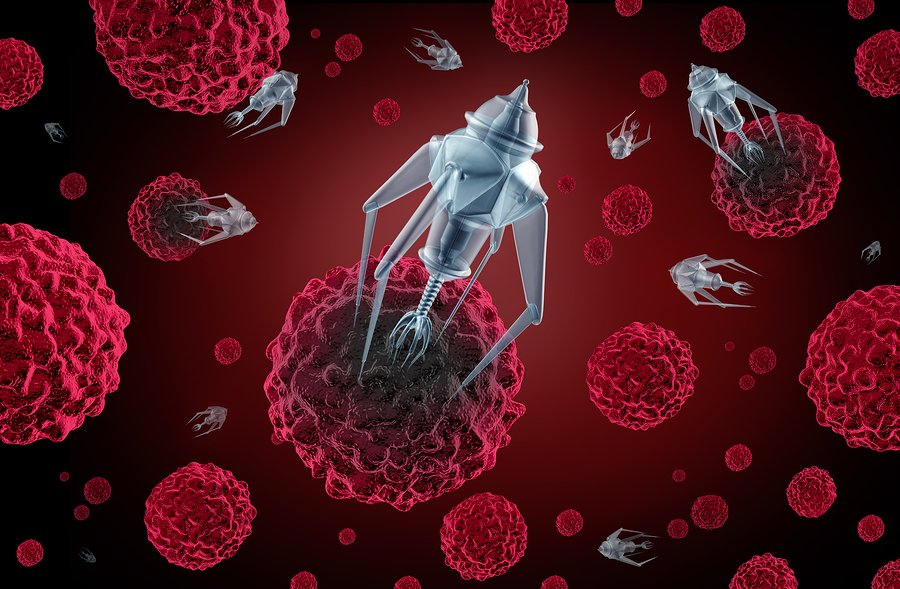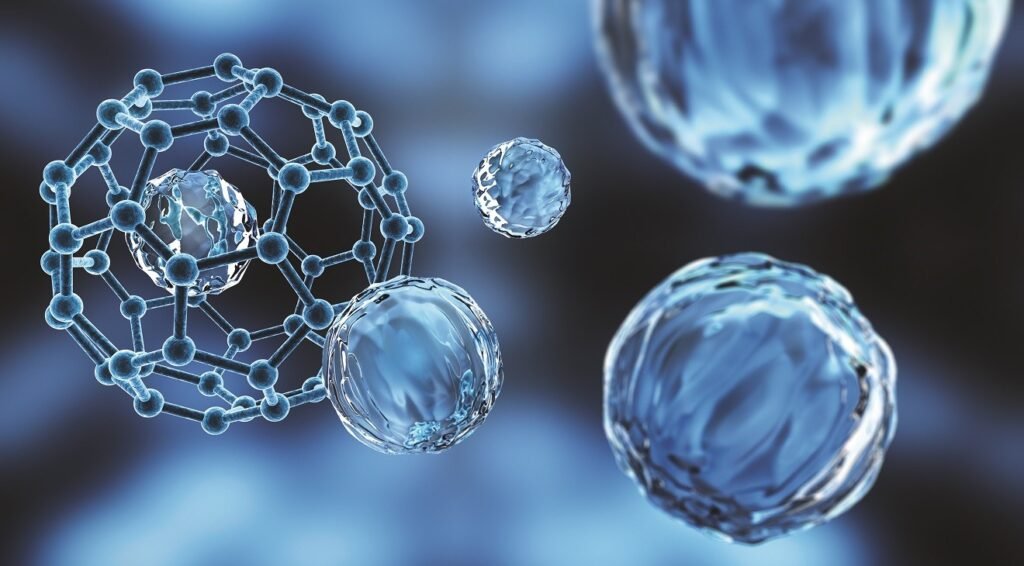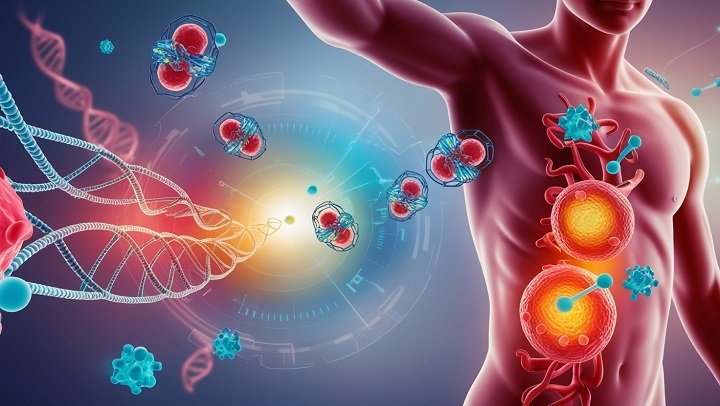- Homepage
- Latest Technology
- Nanotechnology in Medicine A Breakthrough in Healthcare
Nanotechnology in Medicine A Breakthrough in Healthcare
In this blog post, we’ll explore the importance of nanotechnology in medicine, discuss how it is used today, and look at what the future holds. We’ll also touch on some of the challenges this technology faces, but overall, the impact it has on healthcare is promising and exciting!
What is Nanotechnology in Medicine?

Think of it like this: Your body is made up of tiny cells. Diseases, like cancer, start at the cellular level. Nanotechnology allows scientists to work directly with these cells, fixing problems before they become serious issues. It’s like a superhero team working behind the scenes to save the day without anyone even noticing.
Why is Nanotechnology Important in Medicine?
- Early Disease Detection: Traditional methods of diagnosing diseases like cancer often require the disease to grow large enough to be detected by machines like MRI or CT scans. Nanotechnology could allow doctors to find diseases at the molecular level—long before symptoms appear.
- Targeted Drug Delivery: Have you ever taken medicine and felt side effects in parts of your body that don’t even need treatment? Nanotechnology can help by delivering medicine directly to the problem area, minimizing side effects. This also means treatments like chemotherapy could be less harmful to healthy cells.
- Regenerative Medicine: Imagine a world where damaged tissues and organs can be repaired, or even grown, from scratch. Nanotechnology is making advances in tissue engineering that could someday allow for the regrowth of bones, skin, and other tissues.
How Nanotechnology is Used in Medicine Today
1. Cancer Treatment
Cancer treatment is one of the most promising areas for nanotechnology in medicine. One technique involves using nanoparticles to deliver chemotherapy directly to cancer cells. These particles can be designed to target specific cells, so they don’t harm healthy tissues.
In fact, some nanoparticles are designed to attach to cancer cells and destroy them by delivering heat or radiation directly to the tumor, sparing the surrounding healthy tissue. This makes treatments more effective while reducing the unpleasant side effects associated with traditional cancer therapies.
Example: Gold nanoparticles are currently being researched as a way to kill cancer cells. These particles can be injected into a patient’s bloodstream, where they accumulate in the tumor and are heated by lasers, killing the cancer cells without harming the surrounding healthy tissue.
2. Drug Delivery Systems
Nanotechnology is improving the way drugs are delivered in the body. Traditional drugs spread throughout the body, affecting both healthy and unhealthy cells. However, nanoparticles can be used to carry drugs to a specific location in the body, making treatments more effective and reducing side effects.
For example, liposomes, which are tiny spherical vesicles, can carry cancer drugs directly to the tumor site. This targeted drug delivery system improves the efficacy of the treatment while reducing the risk of damaging healthy cells.
3. Diagnostic Tools
Nanotechnology has the potential to revolutionize how we diagnose diseases. Nanoparticles are already being developed as diagnostic tools that can detect the presence of diseases long before traditional methods can.
Researchers are developing Nano sensors that can be used in diagnostic tests to detect diseases like cancer, diabetes, and cardiovascular diseases at very early stages. These sensors can identify disease markers in blood samples or other fluids, providing an early warning system for doctors.
For example, Nano sensors can detect proteins or other molecules that are released by cancer cells into the bloodstream, enabling early diagnosis and more effective treatment.
High-Authority Link: The National Cancer Institute is a leading authority on the use of nanotechnology in cancer research. You can explore their resources on nanotechnology and its role in early cancer detection here.
The Future of Nanotechnology in Medicine
The future of nanotechnology in medicine looks incredibly bright, with the potential to completely transform the way we treat and manage diseases. Here are a few future trends:
1. Personalized Medicine
One of the most exciting possibilities for nanotechnology is the development of personalized medicine. This approach would tailor treatments specifically to an individual’s unique genetic makeup. Nanotechnology could help identify the precise cause of a disease in a person’s DNA, allowing doctors to create treatments that are personalized to the patient.
2. Nanobots
Nanobots are tiny robots, so small that they can be injected into the bloodstream to perform tasks inside the body. These nanobots could one day be used to deliver medicine, repair damaged tissues, or even perform surgeries! Though still in early development, the potential for nanobots in medicine is vast.
Imagine a future where a nanobot could be sent into the body to remove a blood clot, repair an organ, or even fight infections from within. While this technology is still a work in progress, it holds incredible promise for the future of healthcare.
3. Tissue Regeneration
Nanotechnology could also play a significant role in tissue engineering and regenerative medicine. Researchers are exploring ways to use nanomaterials to encourage the growth of new tissues and organs. This technology could one day allow us to regenerate damaged tissues or even create whole organs for transplant.
Challenges Facing Nanotechnology in Medicine
While the benefits of nanotechnology in medicine are exciting, there are also several challenges to overcome before these technologies can be widely adopted.
1. Safety Concerns
Nanoparticles are so small that they can pass through cell membranes and even into the bloodstream, which raises safety concerns. Researchers are studying the long-term effects of nanoparticles in the body to ensure they don’t cause unintended harm.
2. Cost of Development of Nanotechnology in Medicine

3. Regulatory Challenges
Nanotechnology is still a relatively new field, and regulatory agencies are still figuring out how to monitor and regulate its use in medicine. Ensuring the safety and efficacy of nanotech treatments will require new regulations and oversight.
Conclusion
Nanotechnology in medicine is opening up new frontiers in healthcare. From earlier disease detection and more effective treatments to the possibility of personalized medicine and tissue regeneration, the potential for nanotechnology to change the face of medicine is immense.
As we continue to develop and refine these technologies, it’s clear that nanotechnology will play a major role in the future of healthcare. While there are challenges to overcome, the benefits far outweigh the risks, and the progress being made is nothing short of extraordinary.
To stay up to date on the latest advancements in nanotechnology, consider following organizations like the U.S. Food and Drug Administration (FDA), which is working to ensure the safety and effectiveness of these new technologies. You can learn more from their resources here.
Nanotechnology is not just a buzzword in science; it’s a real, tangible technology that’s already making a difference. As research continues, the future of medicine is likely to be smaller, more precise, and more personalized than ever before—thanks to nanotechnology.




